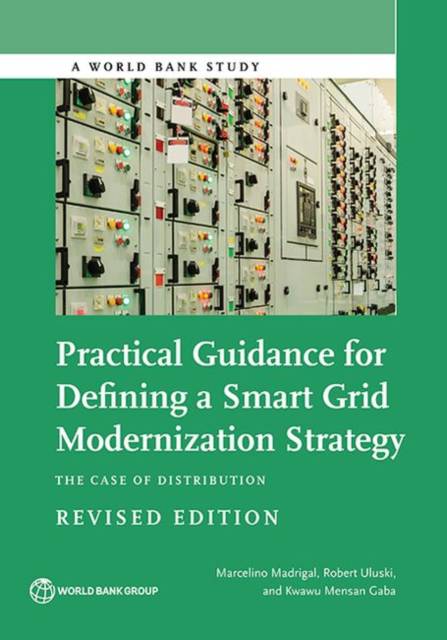
- Afhalen na 1 uur in een winkel met voorraad
- Gratis thuislevering in België vanaf € 30
- Ruim aanbod met 7 miljoen producten
- Afhalen na 1 uur in een winkel met voorraad
- Gratis thuislevering in België vanaf € 30
- Ruim aanbod met 7 miljoen producten
Zoeken
Practical Guidance for Defining a Smart Grid Modernization Strategy
The Case of Distribution (Revised Edition)
Marcelino Madrigal, Robert Uluski, Kwawu Mensan Gaba
€ 56,45
+ 112 punten
Uitvoering
Omschrijving
Practical Guidance for Defi ning a Smart Grid Modernization Strategy: The Case of Distribution guides stakeholders on how utilities can defi ne their own smart grid vision, identify priorities, and structure investment plans. While most of these strategic aspects apply to any area of the electricity grid, the book focuses on distribution. The guidance includes key building blocks for modernizing the distribution grid and provides examples of grid modernization projects. This revised edition also includes key communication system requirements to support a well-functioning grid. The concept of the smart grid is relevant to all grids. What varies are the magnitude and type of the incremental steps toward modernization for achieving a specifi c smart grid vision. A utility that is at a relatively low level of grid modernization may leapfrog one or more levels of modernization to achieve some of the benefi ts of the highest levels of grid modernization. Smart grids impact electric distribution systems signifi cantly. In developing countries, modernizing the distribution grid promises to benefi t the operation of electric distribution utilities in many and various ways. These benefi ts include improved operational effi ciency (such as reduced losses and lower energy consumption), reduced peak demand, improved service reliability, and ability to accommodate distributed generating resources without adversely impacting overall power quality. Practical Guidance for Defi ning a Smart Grid Modernization Strategy concludes by describing funding and regulatory issues that may need to be taken into account when developing smart grid plans. The World Bank Studies series is available for free download online through the Open Knowledge Repository (https: //openknowledge.worldbank.org).
Specificaties
Betrokkenen
- Auteur(s):
- Uitgeverij:
Inhoud
- Aantal bladzijden:
- 176
- Taal:
- Engels
- Reeks:
Eigenschappen
- Productcode (EAN):
- 9781464810541
- Verschijningsdatum:
- 22/03/2017
- Uitvoering:
- Paperback
- Formaat:
- Trade paperback (VS)
- Afmetingen:
- 178 mm x 254 mm
- Gewicht:
- 317 g

Alleen bij Standaard Boekhandel
+ 112 punten op je klantenkaart van Standaard Boekhandel
Beoordelingen
We publiceren alleen reviews die voldoen aan de voorwaarden voor reviews. Bekijk onze voorwaarden voor reviews.








